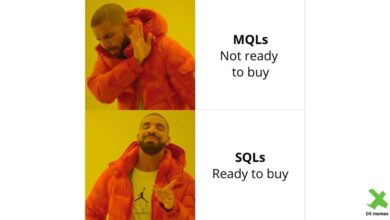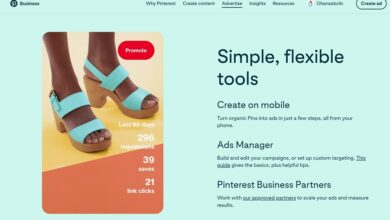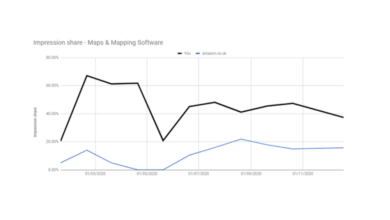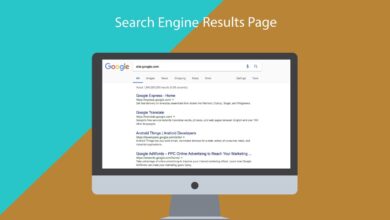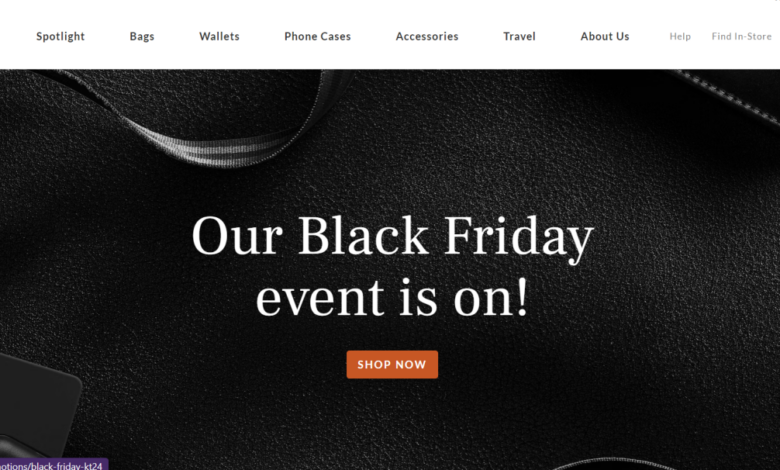
Ecommerce Copywriting Your Guide to Sales
Ecommerce copywriting is the secret weapon behind successful online stores. It’s more than just words; it’s the art of persuasion, crafting compelling narratives that turn browsers into buyers. This guide dives deep into the strategies, techniques, and examples to help you master the craft of ecommerce copywriting and boost your sales.
From crafting irresistible product descriptions to creating conversion-focused sales pages, this comprehensive overview will equip you with the tools to elevate your online presence and maximize your profits. We’ll cover everything from defining the basics to optimizing for different platforms, including mobile, desktop, and social media.
Defining Ecommerce Copywriting
Ecommerce copywriting is the art and science of crafting persuasive text for online stores. It’s more than just describing products; it’s about compelling customers to take action, from browsing to purchasing. This involves understanding the nuances of online shopping behavior and tailoring language to resonate with specific target audiences. Ultimately, effective ecommerce copy converts visitors into loyal customers.Ecommerce copywriting differs significantly from other marketing copy.
While traditional marketing copy often focuses on brand awareness and broad messaging, ecommerce copy is laser-focused on driving sales. It needs to be concise, benefit-driven, and directly answer the questions a customer has at each stage of the buying process. For example, a print ad might aim to establish brand recognition, while a landing page for a specific product needs to highlight its unique features and call to action.
Key Goals of Ecommerce Copywriting
Ecommerce copywriting aims to achieve several crucial objectives. These include boosting conversion rates, increasing average order value, driving traffic to specific product pages, and fostering customer engagement. A successful copywriting strategy is integral to maximizing the revenue potential of an online store. Effective copywriting builds trust and encourages repeat purchases.
Different Approaches to Ecommerce Copywriting
Several approaches to ecommerce copywriting exist, each with its own strengths and weaknesses. Some copywriters prioritize a straightforward, informative approach, focusing on detailed product descriptions. Others favor a more creative, emotionally engaging style, emphasizing storytelling and building a connection with the customer. Both approaches can be effective depending on the target audience and the product being marketed. The best approach usually combines clear information with an engaging narrative.
Essential Elements of Effective Ecommerce Copywriting
The effectiveness of ecommerce copywriting hinges on several key elements. The table below highlights these elements, providing descriptions, examples, and their impact.
| Element | Description | Example | Impact |
|---|---|---|---|
| Compelling Headlines | Captivating titles that immediately grab attention and communicate value. | “Transform Your Home with These Stunning Rugs” | Entices clicks and drives interest; boosts click-through rates. |
| Clear Product Descriptions | Detailed, benefit-driven descriptions that highlight product features and address customer questions. | “This luxurious silk scarf features a delicate paisley pattern, perfect for adding a touch of elegance to your wardrobe.” | Builds trust, addresses concerns, and provides crucial information for informed decisions. |
| Strategic Use of s | Incorporating relevant s to improve search engine optimization and enhance visibility. | “men’s leather wallet,” “best laptop backpack,” “women’s summer dress.” | Increases organic traffic and improves search engine rankings, leading to higher visibility. |
| Strong Calls to Action | Clear and concise instructions on what the reader should do next (e.g., “Buy Now,” “Learn More”). | “Add to Cart Now” | Drives conversions and encourages immediate action. |
| Engaging Storytelling | Connecting with customers on an emotional level through narratives and anecdotes. | “Our artisan coffee beans are hand-picked from the lush mountains of Colombia, a testament to our dedication to quality.” | Builds brand loyalty, fosters trust, and creates a personal connection with the customer. |
Types of Ecommerce Copywriting
Ecommerce copywriting isn’t a one-size-fits-all approach. Different product pages, marketing campaigns, and customer touchpoints require unique copy styles to effectively communicate value and drive conversions. Understanding the various types allows you to tailor your message to specific audiences and objectives. This variety ensures your copy resonates with the intended recipient, resulting in a positive customer experience.Different types of copywriting are crucial for achieving specific goals within the broader ecommerce strategy.
Each type serves a particular function, ranging from attracting initial attention to fostering trust and encouraging purchase decisions. This careful categorization ensures that the copy accurately addresses the needs of the target audience.
Product Descriptions
Product descriptions are the heart of any ecommerce site. They need to go beyond basic features and convey the product’s benefits and value proposition. A well-crafted description inspires desire and convinces customers that the product is worth purchasing. Clear and concise language, high-quality imagery, and a focus on customer needs are key components of effective product descriptions.
Homepage Copy
Homepage copy sets the tone for the entire website and needs to grab the visitor’s attention immediately. It should highlight the unique selling points (USPs) of the store and clearly communicate the brand’s identity. A compelling homepage copy inspires trust and curiosity, leading the visitor to explore the rest of the website.
Category Pages
Category pages act as a guide for customers to find specific products. The copy on these pages should be informative and user-friendly, making it easy for visitors to navigate and discover relevant items. It should clearly define the products within each category, enabling customers to efficiently locate the goods they seek.
Marketing Emails
Marketing emails play a critical role in driving sales and fostering customer relationships. The copy in these emails needs to be engaging, personalized, and focused on providing value to the recipient. A well-written email can inspire excitement and create a sense of urgency, encouraging conversions.
Social Media Copy
Social media copy needs to be concise, engaging, and visually appealing. It should reflect the brand’s voice and personality while attracting attention in a crowded digital space. The copy must be optimized for different social media platforms, ensuring that the message resonates with the specific audience on each platform.
Advertising Copy
Advertising copy needs to be compelling and persuasive, highlighting the benefits of the product and motivating immediate action. It must capture the attention of the target audience within a short timeframe and motivate them to take a specific action, such as visiting a product page or making a purchase.
Table of Different Types of Ecommerce Copywriting
| Type | Description | Target Audience | Examples |
|---|---|---|---|
| Product Descriptions | Detailed explanations of products, highlighting benefits and features. | Potential buyers researching products. | “This high-quality, lightweight jacket is perfect for hiking. Its breathable material keeps you comfortable, while the durable design ensures long-lasting wear.” |
| Homepage Copy | The introductory text on the website’s homepage, setting the tone and brand identity. | Visitors exploring the website for the first time. | “Discover the latest trends in fashion with our curated collection. Shop now and experience exceptional quality and style.” |
| Category Pages | Informative text describing products within a specific category. | Customers searching for specific product types. | “Explore our extensive selection of running shoes, from lightweight models for speed to supportive options for long-distance runners.” |
| Marketing Emails | Promotional messages sent to email subscribers, aiming to drive sales. | Subscribers interested in the brand’s products. | “Get 20% off your first order! Use code NEW20 at checkout.” |
| Social Media Copy | Engaging text and captions for social media platforms. | Social media users interested in the brand or products. | “Stylish new arrivals are here! Check out our latest collection on our website.” |
| Advertising Copy | Persuasive text in advertisements, designed to generate immediate action. | Potential customers viewing advertisements. | “Limited-time offer! Get 50% off all orders today only.” |
Key Elements of Effective Ecommerce Copy
Crafting compelling copy for your online store is crucial for driving sales and building a loyal customer base. Effective ecommerce copywriting goes beyond simply listing product features; it engages customers, builds trust, and motivates them to take action. This involves understanding the nuances of online communication and tailoring your language to resonate with your target audience.Effective ecommerce copywriting isn’t just about writing; it’s about creating a seamless and engaging customer journey.
Strong ecommerce copywriting is crucial for driving sales, but attracting customers in the first place is key. Want to boost your website traffic and generate more leads? Check out these 7 vital strategies to generate 150 leads per month to your website for actionable tips on improving your online presence. 7 vital strategies to generate 150 leads per month to your website Ultimately, captivating copy that resonates with your target audience will convert those leads into loyal customers.
Great copywriting is the secret sauce for successful ecommerce.
It’s about understanding the customer’s needs, addressing their concerns, and guiding them through the purchase process. From captivating product descriptions to persuasive call-to-actions, every word plays a role in influencing conversions.
Clear and Concise Language, Ecommerce copywriting
Clear and concise language is paramount in ecommerce copy. Customers browsing online often have limited time and attention spans. Vague or overly complex language can lead to lost sales opportunities. Concise descriptions highlight key benefits and features, allowing customers to quickly understand the value proposition of a product. Using straightforward language avoids ambiguity and ensures that your message resonates effectively.
Persuasive and Engaging Tone
Ecommerce copy should establish a tone that resonates with the target audience and builds trust. A friendly and helpful tone, while maintaining professionalism, can significantly influence purchasing decisions. Using storytelling, testimonials, and showcasing the emotional connection with a product helps customers relate to the brand. This personalized approach can transform potential customers into loyal advocates.
Effective Call-to-Actions (CTAs)
A strong call-to-action is essential for guiding customers towards a desired outcome, such as making a purchase or signing up for a newsletter. CTAs should be clear, concise, and visually distinct. They should use action-oriented verbs and create a sense of urgency without being overly aggressive. Effective CTAs clearly communicate the next step, removing any ambiguity.
Examples of Effective CTAs
- “Add to Cart”
-A straightforward and widely used CTA that is clear and concise. - “Learn More”
-A good CTA for directing customers to additional product information or detailed specifications. - “Shop Now”
-A general CTA for encouraging immediate action, often used for promotions or new product launches. - “Get a Free Sample”
-This CTA incentivizes customers to take action by offering something valuable for free. - “Limited Time Offer – Click Here”
-A powerful CTA using scarcity and urgency to drive sales.
Table of Key Elements in Ecommerce Copy
| Element | Importance | Example in Ecommerce Copy |
|---|---|---|
| Clear and Concise Language | Quickly communicates product value, avoiding ambiguity. | “Lightweight, durable, and stylish backpack.” |
| Persuasive and Engaging Tone | Builds trust and emotional connection with the brand. | “Experience the ultimate comfort and style with our new sofa.” |
| Effective Call-to-Action (CTA) | Clearly guides customers to desired action. | “Buy Now and Get 20% Off!” |
| Compelling Product Descriptions | Highlights key features and benefits, sparking customer interest. | “This high-performance running shoe offers superior cushioning and breathability, perfect for long-distance runs.” |
| Visual Appeal | Creates a strong first impression and enhances customer engagement. | High-quality images and videos showcasing the product from various angles. |
Crafting Compelling Product Descriptions
Product descriptions are the silent salespeople of your online store. They’re the first impression a customer has of your product, influencing whether they click “add to cart” or move on to the next listing. Crafting compelling descriptions is crucial for driving conversions and building brand trust. A well-written description clearly communicates the value proposition, highlighting features and benefits, and ultimately persuading the customer to make a purchase.Effective product descriptions go beyond simply listing specs.
They paint a picture, evoke emotion, and position the product as the ideal solution for a customer’s needs. This involves understanding your target audience and crafting a message that resonates with their desires and aspirations. By carefully considering the language, structure, and presentation of your product descriptions, you can significantly boost sales and create a positive customer experience.
Crafting compelling ecommerce copy is key, but knowing how to optimize it for search is equally important. Before you dive deep into your copywriting, it’s crucial to ask the right questions of your SEO agency. For example, consider checking out this helpful resource on questions to ask SEO agencies to ensure you’re getting the most out of your partnership.
Ultimately, the best ecommerce copy will attract customers and boost sales, and a well-informed strategy is half the battle.
Highlighting Key Features and Benefits
Effective product descriptions clearly differentiate your product from competitors by focusing on both features and benefits. Features are the tangible characteristics of the product, while benefits are the advantages those features provide to the customer. For example, a feature of a running shoe might be its lightweight design, while the benefit is reduced fatigue and increased speed. Highlighting benefits is key to connecting with the customer on an emotional level.
Using Storytelling in Product Descriptions
Incorporating storytelling can significantly enhance the impact of your product descriptions. Stories create an emotional connection with the reader, making them feel invested in the product and its value proposition. Consider a story that illustrates how the product solved a problem or fulfilled a need for a specific customer. This approach transforms a simple product description into a compelling narrative that resonates with the reader’s experiences and aspirations.
This method not only makes the product more appealing but also strengthens the brand’s image.
Template for a Persuasive Product Description
A well-structured template can ensure your product descriptions are both informative and persuasive. The following structure is highly effective:
| Section | Content |
|---|---|
| Benefits | Focus on what the productdoes* for the customer. Use strong action verbs and highlight the positive outcomes. For example, “Save time and effort with our automated system,” rather than “The system automates tasks.” |
| Features | Describe the product’s technical specifications and characteristics. Provide concrete details and avoid jargon. For example, “Made with high-quality materials,” rather than “Superior craftsmanship.” |
| Call to Action | Encourage immediate action with a clear and compelling call to action. Examples include “Order yours today!” or “Learn more and claim your discount.” |
Different Formats for Presenting Product Descriptions
The format of your product descriptions can significantly impact their effectiveness. Consider these options:
- Bullet Points: Effective for quickly highlighting key features and benefits. Easy to scan and digest. However, they can lack the depth and narrative of other formats.
- Paragraph Format: Allows for a more detailed explanation of the product, building a narrative and connecting with the customer on a deeper level. However, can be less engaging than other formats.
- Accordion-Style Descriptions: This format allows users to expand and contract sections to show or hide details. It’s good for complex products or when you need to present a lot of information in a concise manner.
Choosing the right format depends on the complexity of the product and the overall marketing strategy. A combination of approaches may be most effective for maximizing engagement and conversion.
Writing Persuasive Sales Pages
Crafting compelling sales pages is crucial for driving conversions in e-commerce. These pages are the heart of your online store, where visitors make the decision to buy or leave. A well-structured sales page, combined with persuasive language and compelling visuals, can significantly increase your sales and ultimately, your bottom line. A strong sales page should be more than just a product listing; it’s a journey that guides the customer through the decision-making process.Effective sales pages are carefully designed to address customer needs and desires, presenting the product’s benefits and value proposition in a clear and concise manner.
They utilize various persuasive techniques to influence the customer and move them towards a purchase. This involves understanding the customer’s pain points, desires, and motivations, and tailoring the messaging accordingly.
Sales Page Structures
Different structures work best for various products and target audiences. Understanding the structure is key to guiding the customer through the sales process. A common and effective approach is the “problem-agitate-solution” structure, where the page first establishes a problem the customer might be facing, then highlights the negative consequences of not addressing it, and finally presents the product as the solution.
Another approach is the “feature-benefit” structure, which clearly Artikels the features of the product and then explains how those features translate into tangible benefits for the customer. Ultimately, the best structure will depend on the product and the specific needs of your target audience.
Visuals and Imagery in Sales Pages
High-quality visuals play a significant role in influencing purchasing decisions. Images and videos showcase the product’s features and benefits in a tangible way, creating a more engaging and memorable experience for the customer. Professional photography or videography that captures the product’s essence is crucial. Videos demonstrating the product’s use or highlighting its features are especially effective, often creating a stronger emotional connection with the viewer than static images alone.
Persuasive Language in Sales Page Copy
Using persuasive language is crucial for compelling sales copy. This includes employing strong action verbs, emphasizing the benefits of the product, and creating a sense of urgency or scarcity. The language should be clear, concise, and compelling, avoiding jargon or technical terms that might confuse the reader. Focusing on the customer’s needs and desires is essential; the language should speak directly to the customer’s motivations and desires, rather than simply listing product specifications.
Building Persuasive Sales Pages: A Table
| Element | Description | Example | Impact |
|---|---|---|---|
| Headline | Captures attention and clearly communicates the product’s value proposition. | “Stop Struggling with [Problem]; Discover the Solution!” | Immediately grabs the reader’s attention and establishes the page’s purpose. |
| Body Copy | Provides detailed information about the product, its features, and benefits. Focuses on customer needs. | “Our revolutionary [Product Name] is designed to solve the common problem of [problem] by [how it works]. It’s made with [material] and features [specific feature] to provide [benefit].” | Expands on the headline and provides a more in-depth explanation of the product and its benefits. |
| Call to Action (CTA) | Encourages the customer to take the desired action, such as making a purchase. | “Claim Your Free Trial Today!” or “Shop Now and Save 20%!” | Clearly directs the reader towards the desired action. |
| Social Proof | Demonstrates that others have trusted and used the product. | “90% of users reported [positive result] after using [Product Name].” | Builds credibility and trust with potential customers. |
| Testimonials | Provides direct feedback from satisfied customers. | “I was skeptical at first, but [Product Name] completely changed my [area of life]. I highly recommend it!” | Adds a personal touch and reinforces the product’s positive impact. |
Optimizing Copy for Specific Platforms

Crafting compelling copy isn’t a one-size-fits-all endeavor. Different platforms demand tailored approaches. A captivating description for a product on a high-traffic website might fall flat on a niche social media feed. Understanding these nuances is crucial for maximizing your ecommerce efforts. Knowing how to adapt your copy for different platforms is vital for reaching your target audience effectively.Effective copywriting for ecommerce transcends the product itself; it’s about crafting messages that resonate with the specific environment where your target customer interacts.
This requires a deep understanding of platform-specific user behavior, preferences, and the overall context of the platform. Adaptations in tone, style, and length can significantly influence conversion rates.
Adapting Copy for Mobile Platforms
Mobile devices are now the primary shopping tool for many consumers. Optimizing copy for mobile means prioritizing concise, scannable content. Avoid lengthy paragraphs and focus on compelling visuals and clear calls to action. Short, punchy descriptions are essential for grabbing attention quickly. Mobile users are often browsing on the go, so clear, concise product information is key.
Including high-quality images and videos that load quickly is also crucial.
Adapting Copy for Desktop Platforms
Desktop platforms offer more space for detailed product descriptions and elaborate storytelling. You can leverage this space to create in-depth content that provides comprehensive product information. Detailed specifications, user reviews, and comparisons can be integrated seamlessly into the copy. This is where you can truly showcase the value proposition of your products.
Optimizing Copy for Social Media
Social media platforms require a unique approach to copywriting. Brevity, engagement, and visual appeal are paramount. Short, attention-grabbing captions paired with high-quality images or videos are crucial. Use relevant hashtags to expand your reach and use engaging questions to encourage interaction. Think about the platform’s specific algorithm and the type of content that performs best on that channel.
Optimizing Copy for Email Marketing
Email marketing remains a powerful tool for ecommerce businesses. Your copy should be targeted and personalized to the recipient. Focus on clear subject lines that pique interest, concise body copy highlighting key product benefits, and compelling calls to action. Use pre-header text and design elements to grab attention quickly. Consider segmenting your email lists to tailor the copy to specific customer interests.
Adapting Copy to Different Product Categories
The nature of your product directly influences your copywriting style. Luxury goods require a different approach compared to everyday essentials. Consider the target audience’s needs and desires when crafting copy for each product category. For example, a luxury handbag might benefit from evocative language highlighting craftsmanship and exclusivity, while a household cleaning product might focus on practicality and efficiency.
Platform-Specific Copywriting Guidelines
| Platform | Key Considerations | Example |
|---|---|---|
| Mobile | Conciseness, scannability, clear CTAs, high-quality images | “Fast Shipping! Shop now.” |
| Desktop | Detailed descriptions, user reviews, comparisons, in-depth information | “Discover the craftsmanship behind this luxurious handbag.” |
| Social Media | Brevity, engagement, visuals, hashtags, questions | “Love this new product? Tell us why!” |
| Email Marketing | Targeted, personalized, compelling subject lines, concise body copy, clear CTAs | “Exclusive offer: 20% off your first order!” |
| Product Category (Luxury Goods) | Evocative language, craftsmanship, exclusivity | “Experience unparalleled luxury with this exquisite piece.” |
Analyzing and Improving Copy Performance
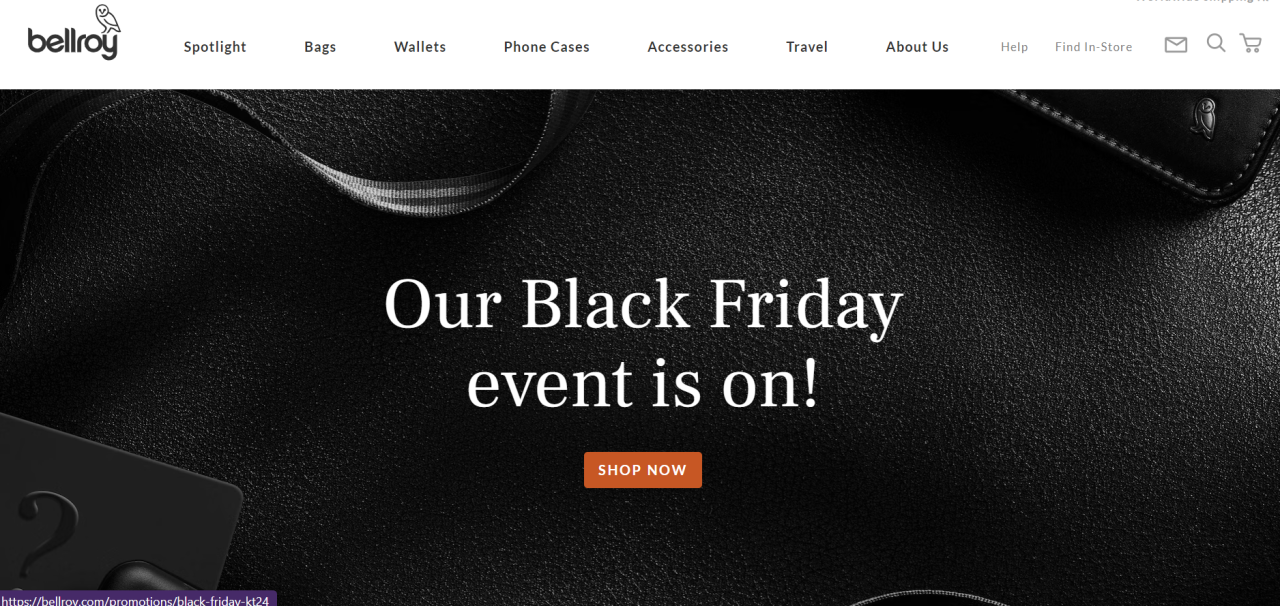
Fine-tuning your ecommerce copy isn’t a one-and-done affair. It’s an ongoing process of analyzing performance, identifying areas for improvement, and adapting your strategy based on real-world data. Understanding how your copy impacts customer behavior is crucial for maximizing sales and conversions. This involves meticulously tracking key metrics, analyzing customer feedback, and rigorously testing different variations of your copy.Analyzing your copy performance allows you to understand what resonates with your target audience, identify weaknesses in your messaging, and ultimately refine your strategy for maximum impact.
This data-driven approach ensures your copy is consistently optimized for conversions and sales.
Tracking Copy Effectiveness
Understanding how your copy performs is vital to optimize its effectiveness. A variety of tools and techniques can be used to measure the success of your copy, including website analytics platforms and A/B testing. These tools allow you to see how customers interact with your copy and identify which elements are driving engagement and conversions.
Crafting compelling ecommerce copy is key, but understanding seasonal marketing is just as important. For example, a St. Patrick’s Day marketing strategy, like the one outlined in this helpful guide st patricks day marketing strategy , can significantly boost sales. Ultimately, strong copywriting, tailored to specific holidays, is the real secret sauce for online success.
Metrics for Measuring Impact
Several metrics can reveal the impact of your copy on sales and conversions. These metrics provide quantifiable evidence of the copy’s effectiveness, allowing you to track progress and make necessary adjustments. Key performance indicators (KPIs) such as click-through rates (CTR), conversion rates, bounce rates, and average order value (AOV) are important in measuring the effectiveness of your copy.
Analyzing Customer Feedback and Reviews
Customer feedback and reviews provide invaluable insights into how your copy is perceived. Actively collecting and analyzing this feedback allows you to identify areas where your copy is successful and where improvements are needed. Understanding what customers are saying about your copy, both positively and negatively, gives you a clear picture of how your message is being received.
A/B Testing Different Copy Versions
A/B testing different versions of your copy is a powerful method for optimizing performance. By systematically testing different headlines, descriptions, and calls to action, you can identify the most effective variations. This iterative process of testing and refining your copy ensures you are always using the most persuasive and effective wording possible.
Key Metrics for Evaluating Copy Performance
This table Artikels key metrics and their corresponding explanations for evaluating copy performance:
| Metric | Explanation |
|---|---|
| Click-Through Rate (CTR) | Percentage of users who click on a link or call to action after viewing your copy. A higher CTR indicates more interest in your offerings. |
| Conversion Rate | Percentage of visitors who complete a desired action, such as making a purchase. A higher conversion rate signifies that your copy effectively drives desired outcomes. |
| Bounce Rate | Percentage of visitors who leave your website after viewing only one page. A high bounce rate suggests your copy may not be compelling enough to keep visitors engaged. |
| Average Order Value (AOV) | Average amount spent per order. Analyzing AOV in relation to your copy can identify if your copy encourages customers to purchase more items. |
| Customer Acquisition Cost (CAC) | Cost of acquiring a new customer. This metric helps determine if the investment in copy is resulting in a positive return on investment (ROI). |
| Website Traffic Sources | Identify the channels driving traffic to your site. This helps in tailoring copy for specific platforms or demographics. |
Illustrative Examples of Excellent Ecommerce Copy
E-commerce copywriting isn’t just about words; it’s about crafting compelling narratives that connect with customers on an emotional level. Exceptional copy goes beyond simply describing a product; it paints a picture of the benefits, builds trust, and motivates action. Effective examples showcase a deep understanding of the target audience, a clear understanding of the product’s value proposition, and the art of persuasive storytelling.Exceptional e-commerce copy is tailored to specific audiences and platforms.
It resonates with customers by addressing their needs and desires. Understanding the nuances of different customer segments is crucial in creating impactful copy. By analyzing successful examples, we can dissect the strategies behind their effectiveness and apply those lessons to our own copywriting efforts.
Examples from Different Businesses
Successful e-commerce copy often hinges on understanding the specific product or service and tailoring the language to evoke a desired emotional response. Different businesses leverage various techniques to achieve this.
- Outdoor Gear Retailer: A retailer specializing in outdoor gear might use copy that highlights the thrill of adventure and the connection with nature. They might showcase user testimonials and stories of successful expeditions, emphasizing the durability and performance of their products. The copy would likely focus on the experiences the products facilitate rather than just their technical specifications. This resonates with the adventurous spirit of their target audience, encouraging them to embrace exploration and experience the outdoors.
- Luxury Fashion Brand: A luxury fashion brand might emphasize exclusivity, craftsmanship, and timeless style. The copy might focus on the unique details of the design, the high-quality materials used, and the prestige associated with owning the product. They might use evocative language, high-quality imagery, and a sophisticated tone to reflect the brand’s image. This copy would appeal to customers seeking luxury and status.
- Subscription Box Service: A subscription box service might focus on convenience, surprise, and discovery. The copy could highlight the curated selection of products, the ease of ordering, and the unique experience each box provides. They often emphasize the monthly surprise element and the community of subscribers to build excitement and loyalty. This appeals to customers seeking novelty, convenience, and a sense of community.
Analyzing Specific Strategies
Successful copywriters employ various strategies to make their words impactful. Understanding these strategies is essential for creating compelling e-commerce copy.
- Highlighting Benefits, Not Just Features: Instead of listing features, exceptional copywriters translate those features into tangible benefits for the customer. For example, instead of saying a jacket is “waterproof,” they might say it “keeps you dry in any weather.” This shift in focus emphasizes the value proposition of the product to the customer.
- Using Strong Action Verbs: Strong verbs create a sense of urgency and action. Examples include “discover,” “experience,” “achieve,” “embrace,” and “explore.” These words encourage engagement and action from the customer, translating to higher conversion rates.
- Building Trust and Credibility: Including customer testimonials, social proof, and security badges fosters trust and assures the customer of the retailer’s reliability. This reduces uncertainty and makes the purchase decision more straightforward.
Comparing Strengths and Weaknesses
Analyzing examples helps in understanding the interplay between various copywriting elements.
- Comparison of Copywriting Styles: The copywriting styles for a luxury brand and an outdoor gear retailer would differ significantly. The luxury brand would prioritize elegance and exclusivity, while the outdoor gear retailer would emphasize practicality and durability. Understanding these differences allows for a more nuanced approach to crafting compelling copy for different audiences.
- Identifying Common Traits of Successful Copy: Successful e-commerce copy often shares common traits such as clear value propositions, compelling storytelling, and a strong call to action. Analyzing these traits allows us to create effective copy for diverse businesses.
Outcome Summary: Ecommerce Copywriting
In conclusion, mastering ecommerce copywriting is essential for any online business aiming to thrive in the competitive digital marketplace. By understanding the nuances of different copywriting types, crafting compelling product descriptions and sales pages, and optimizing for various platforms, you can unlock the full potential of your online store. This guide provided a roadmap to boost conversions, and with the right approach, your ecommerce copy can drive significant results.
